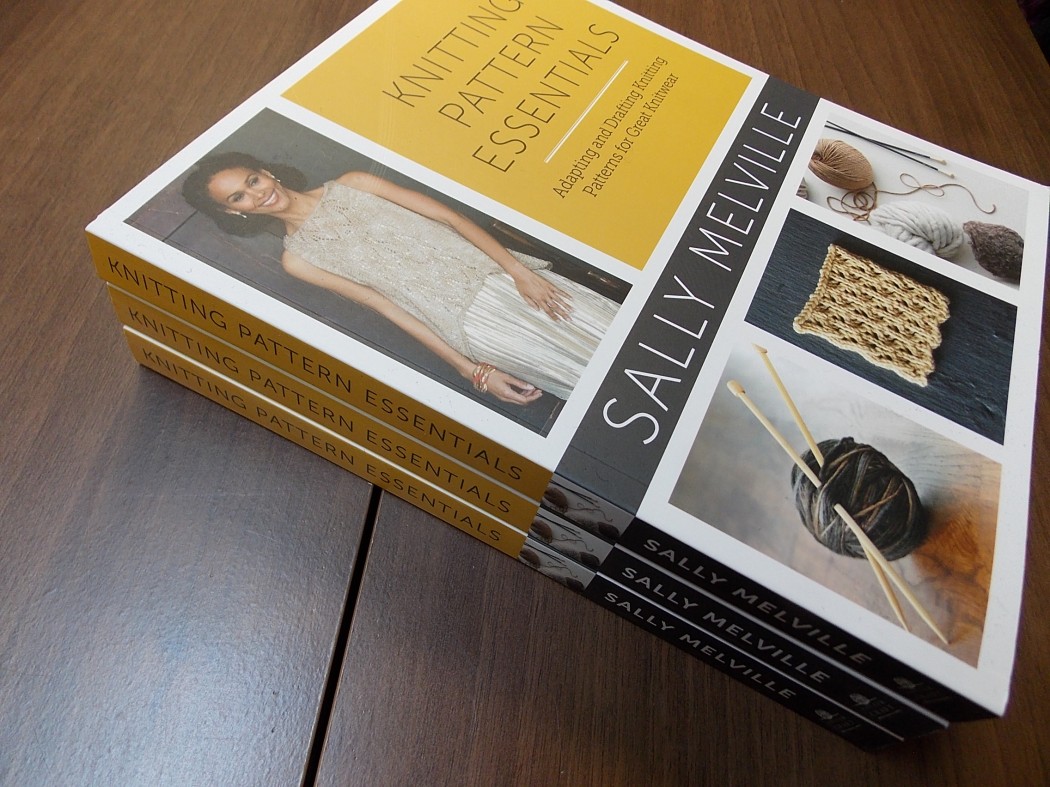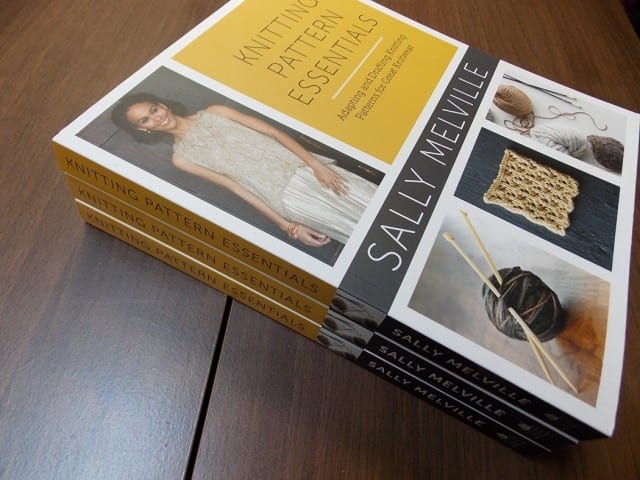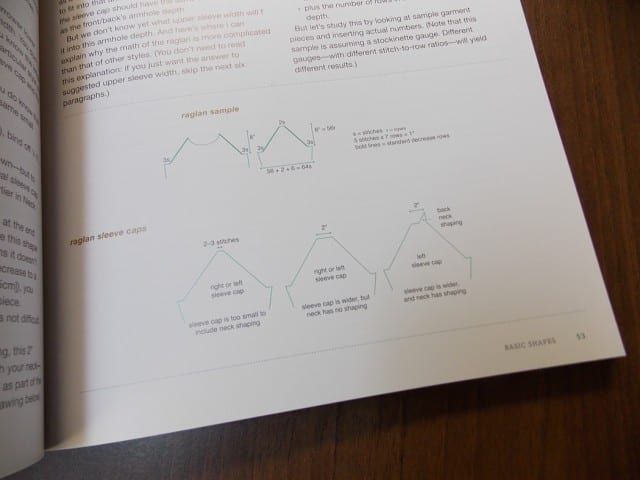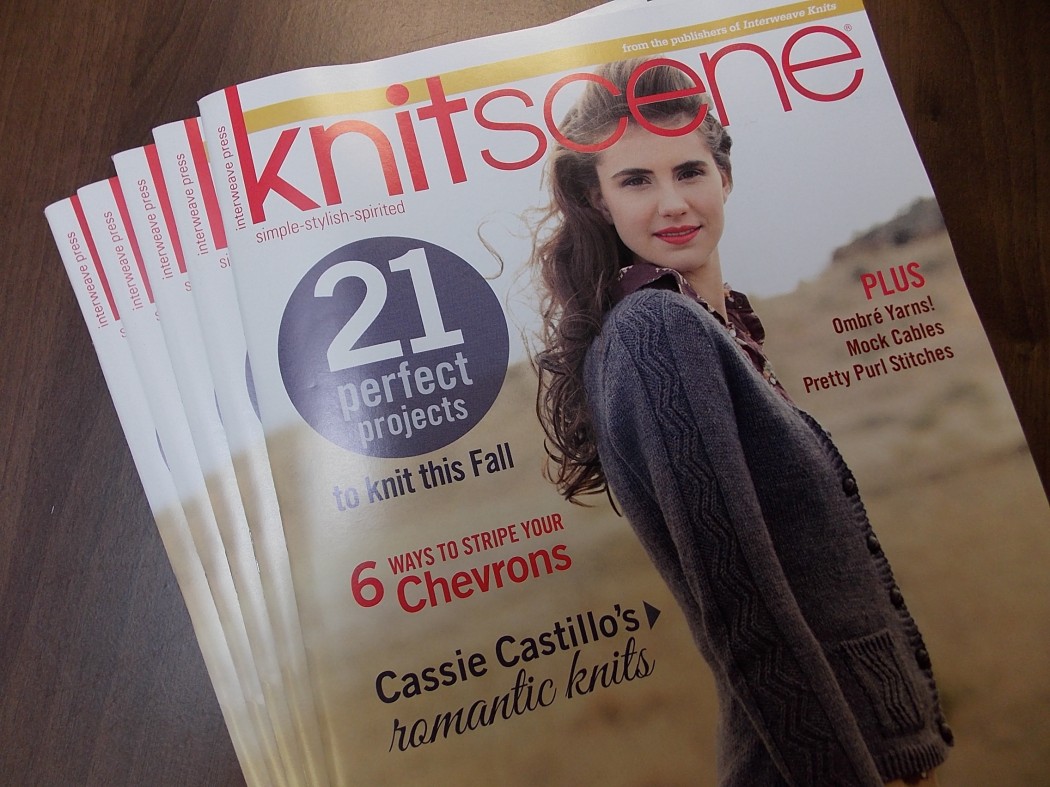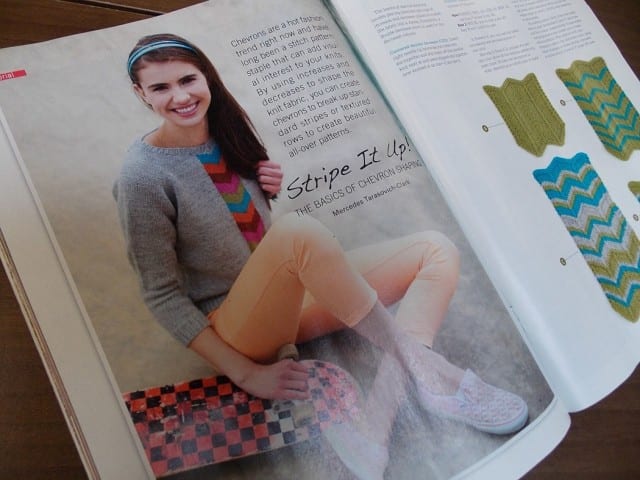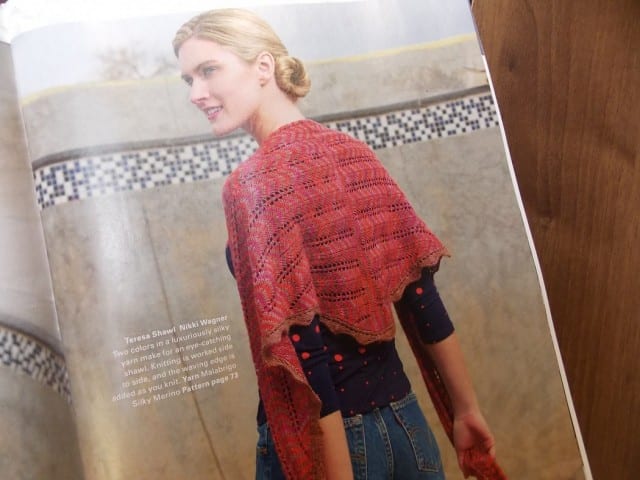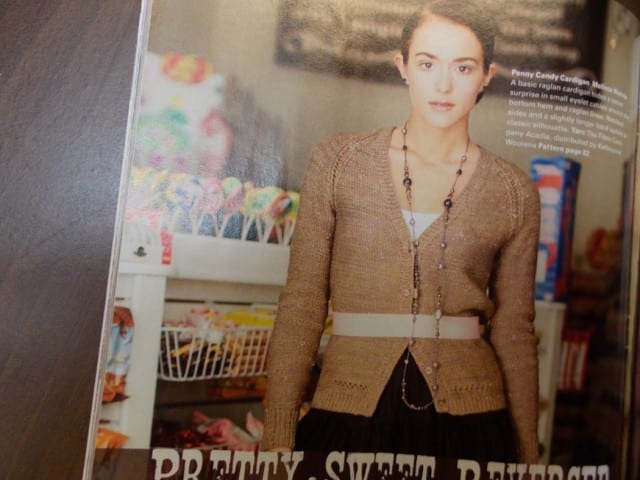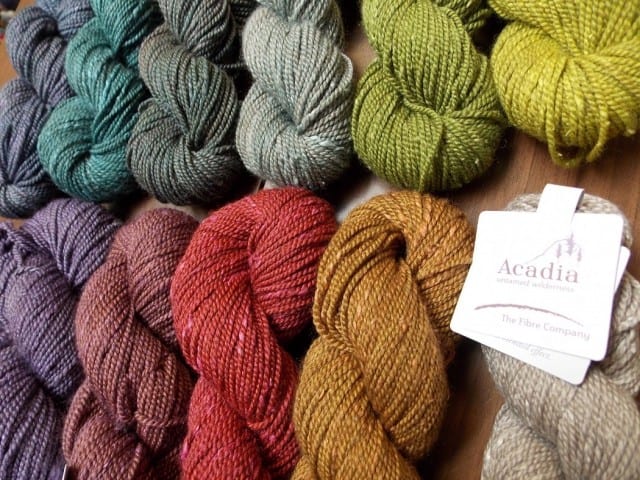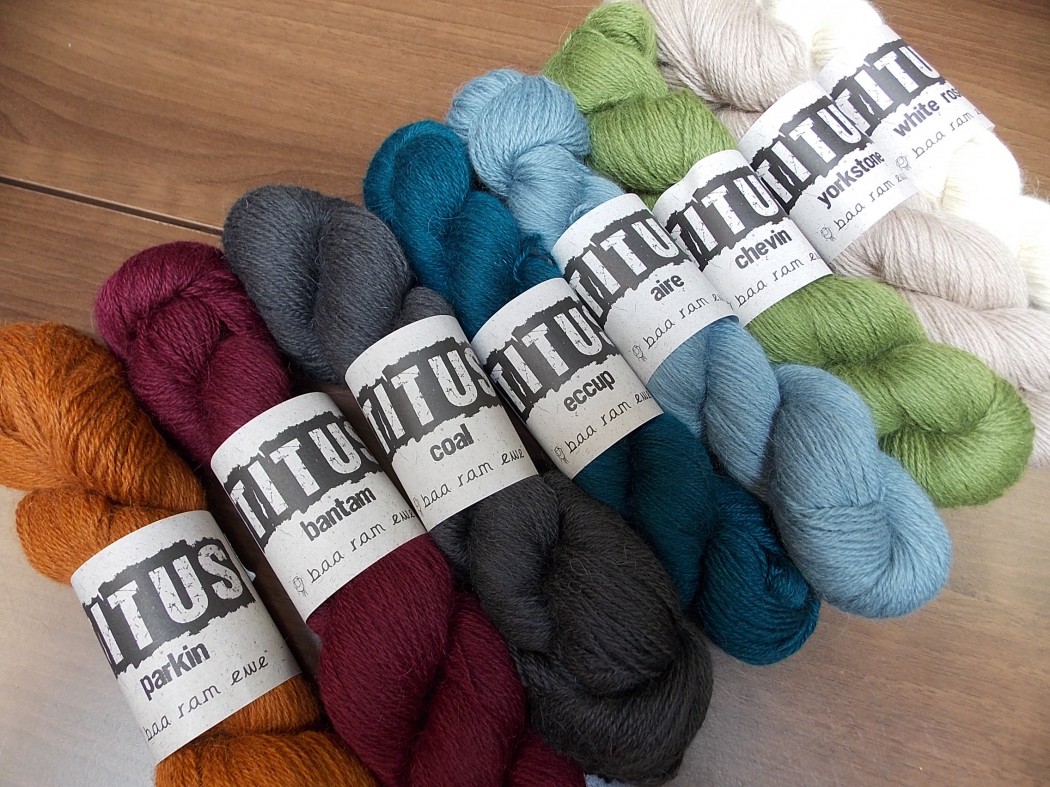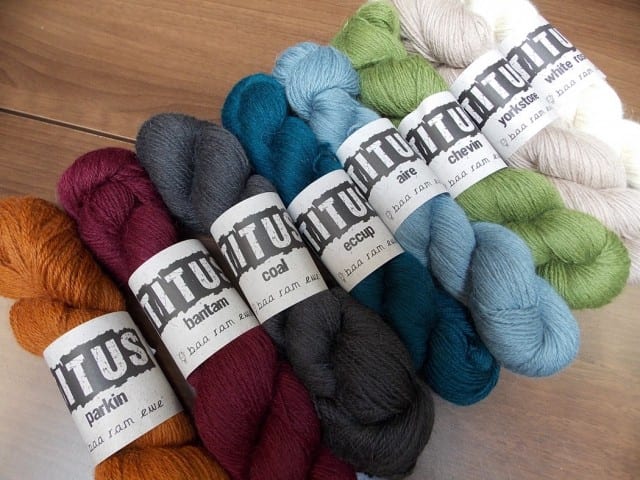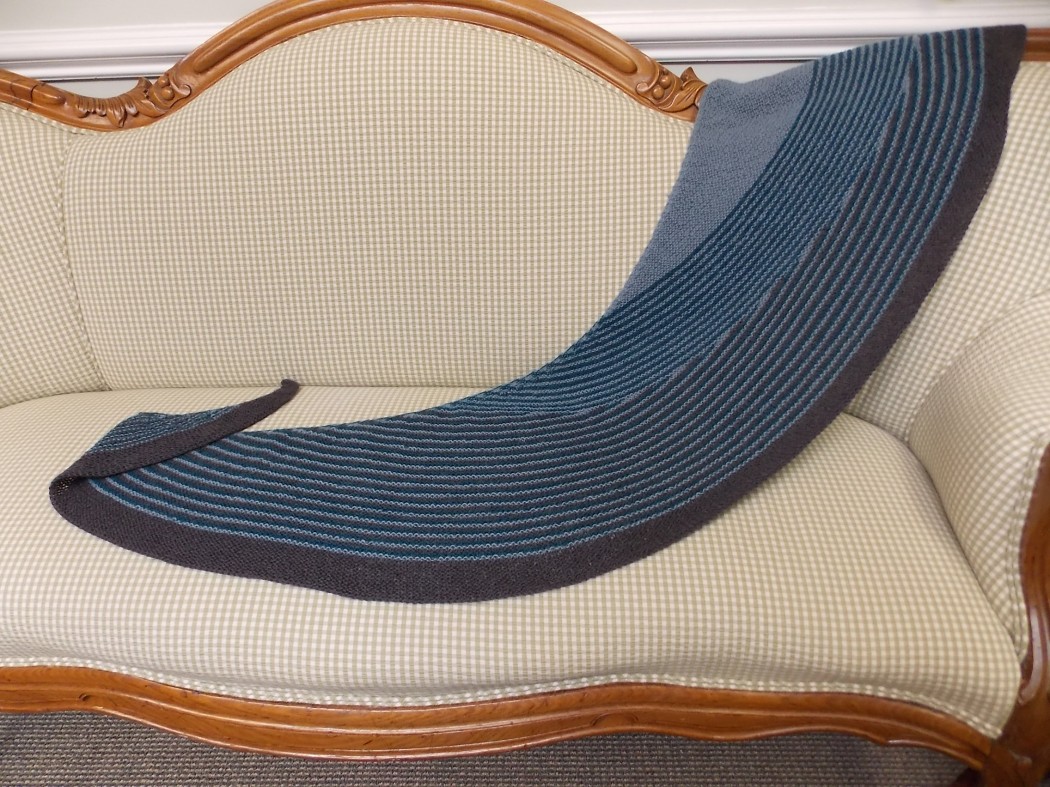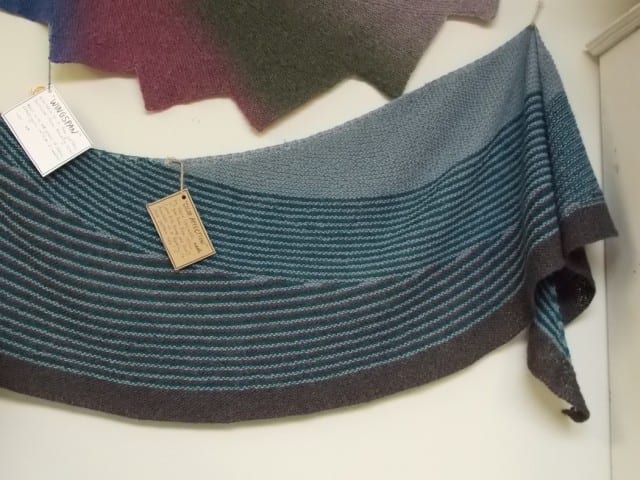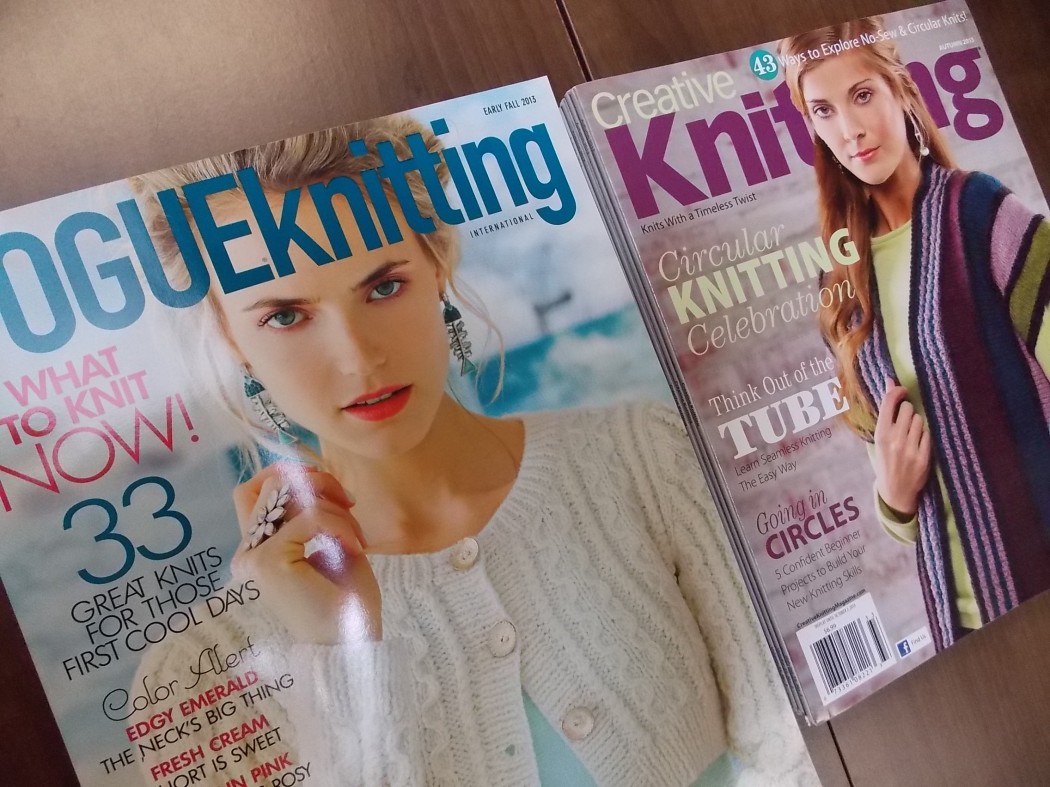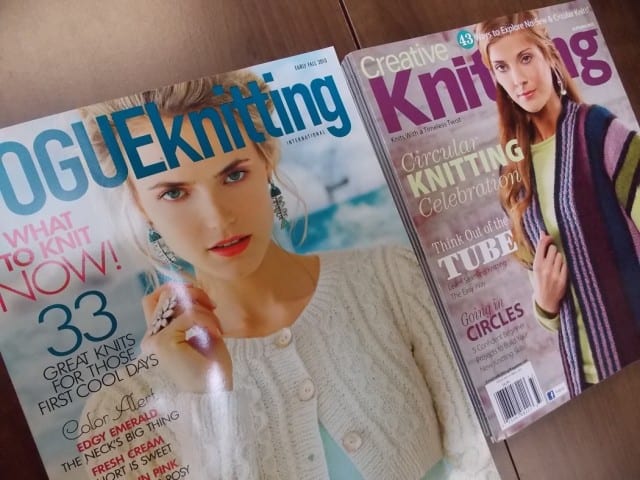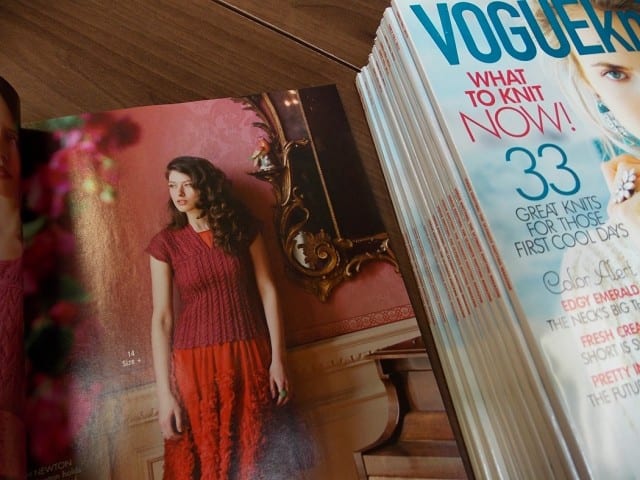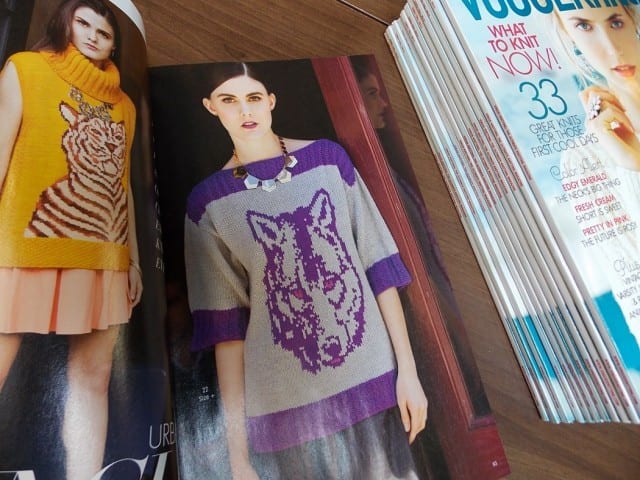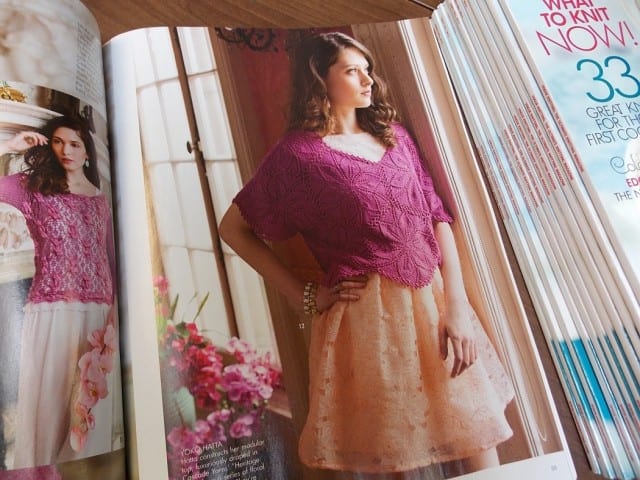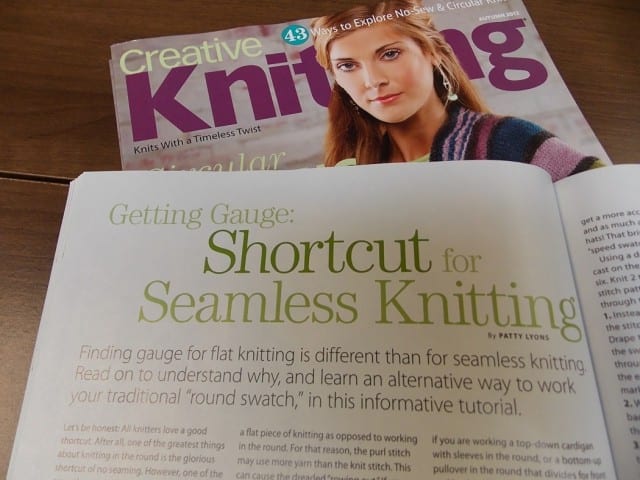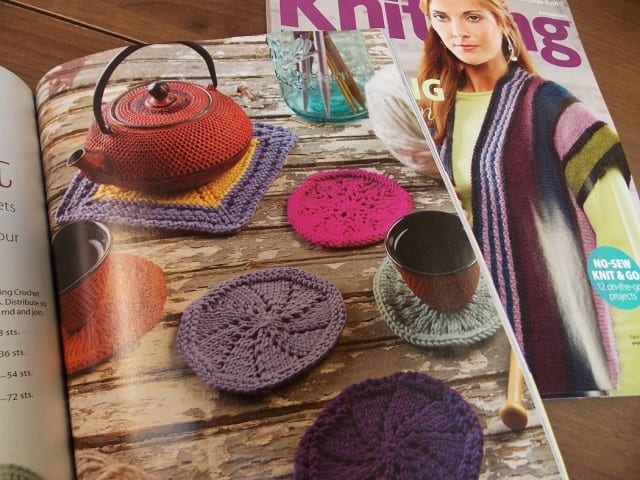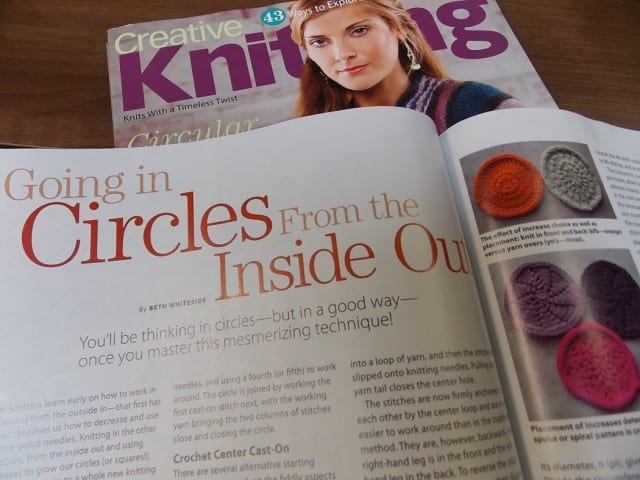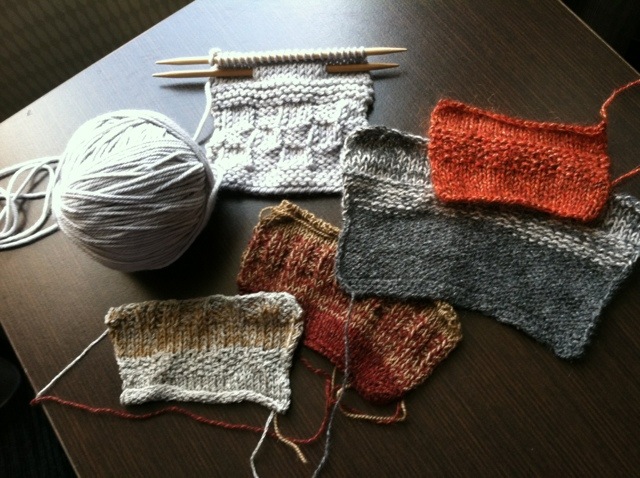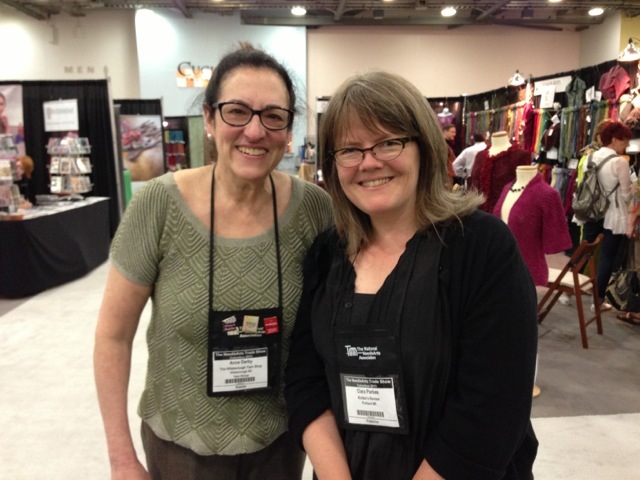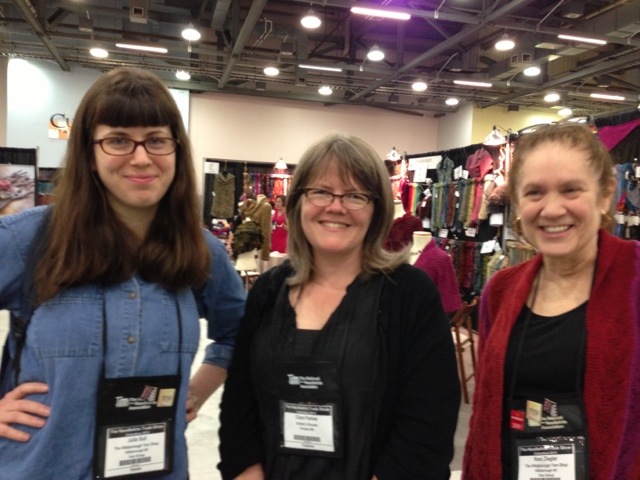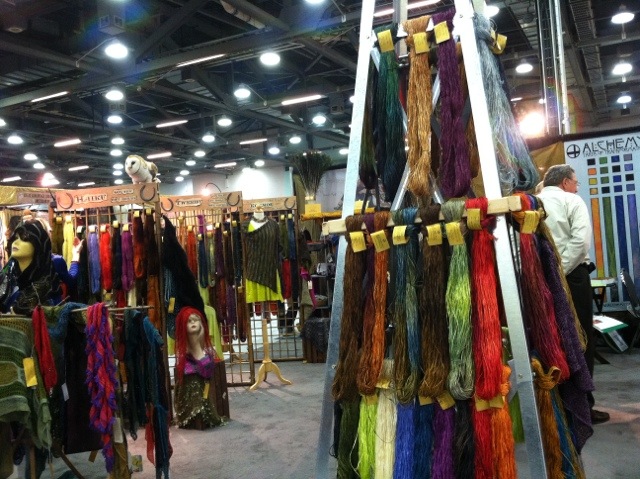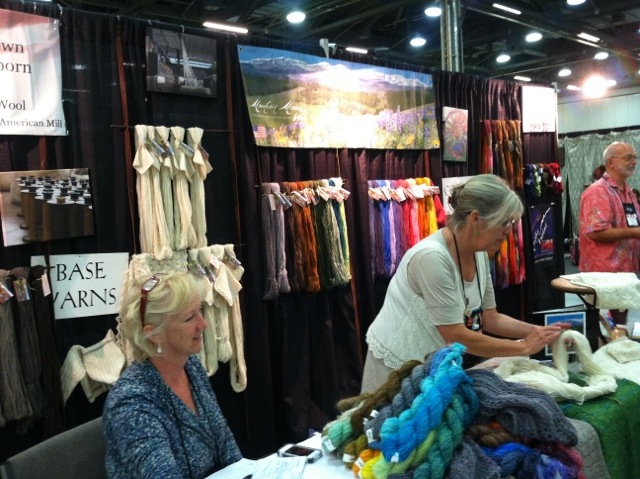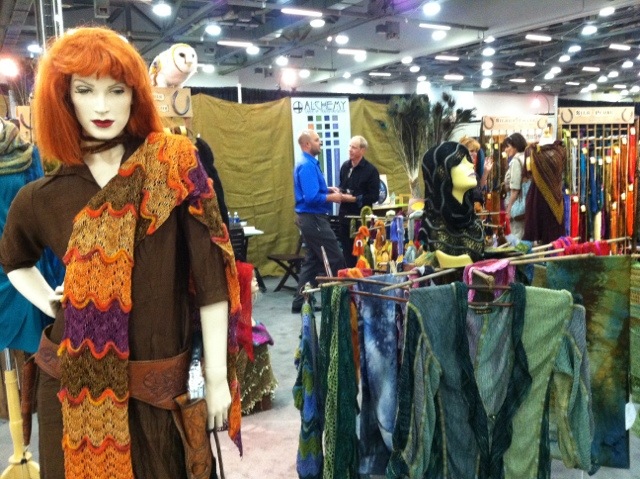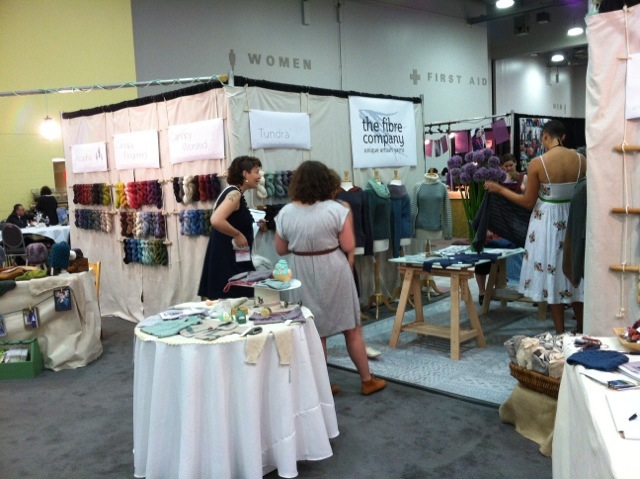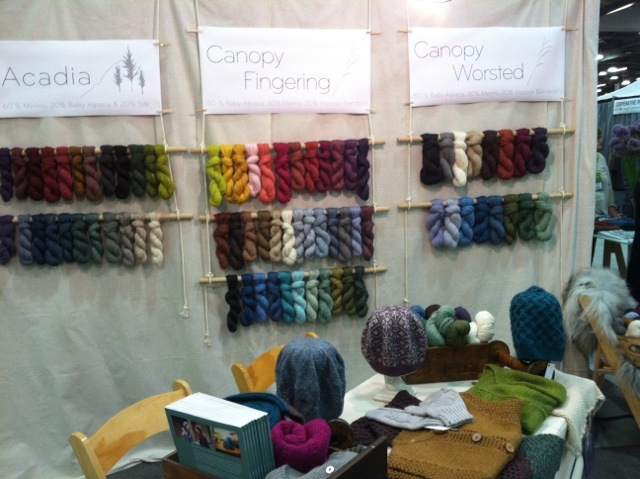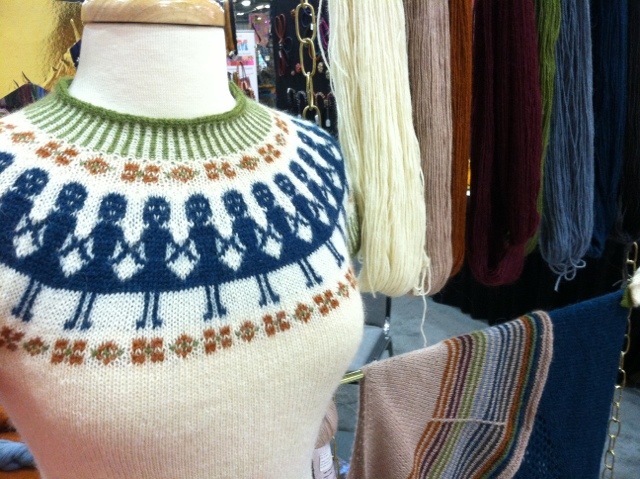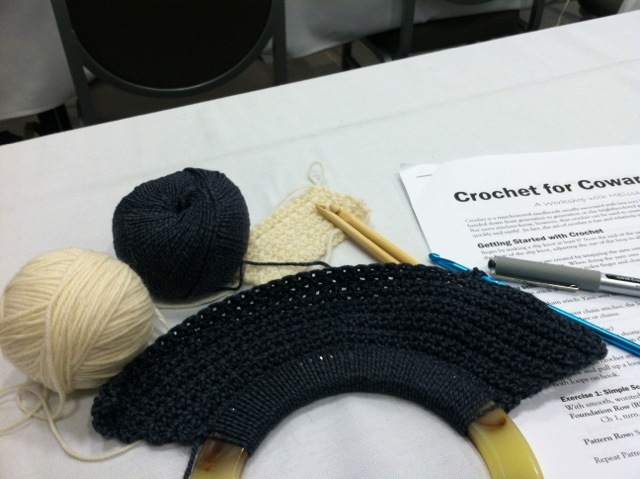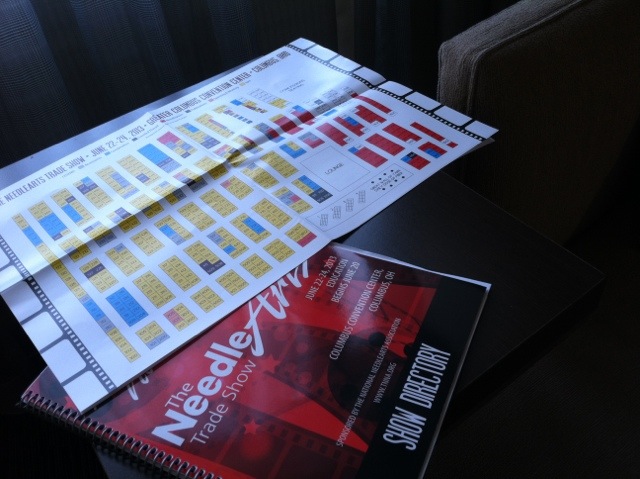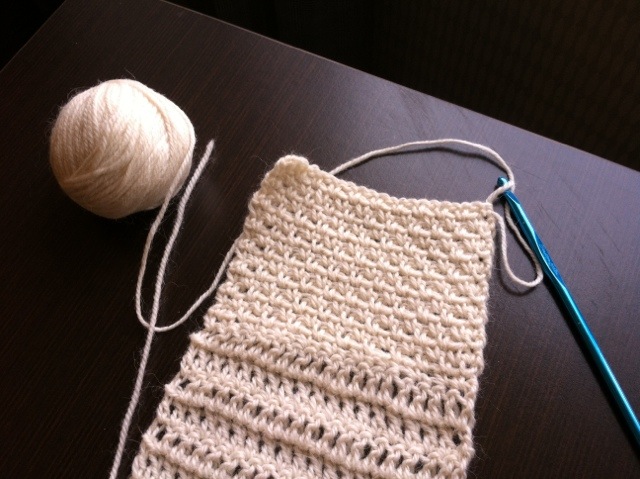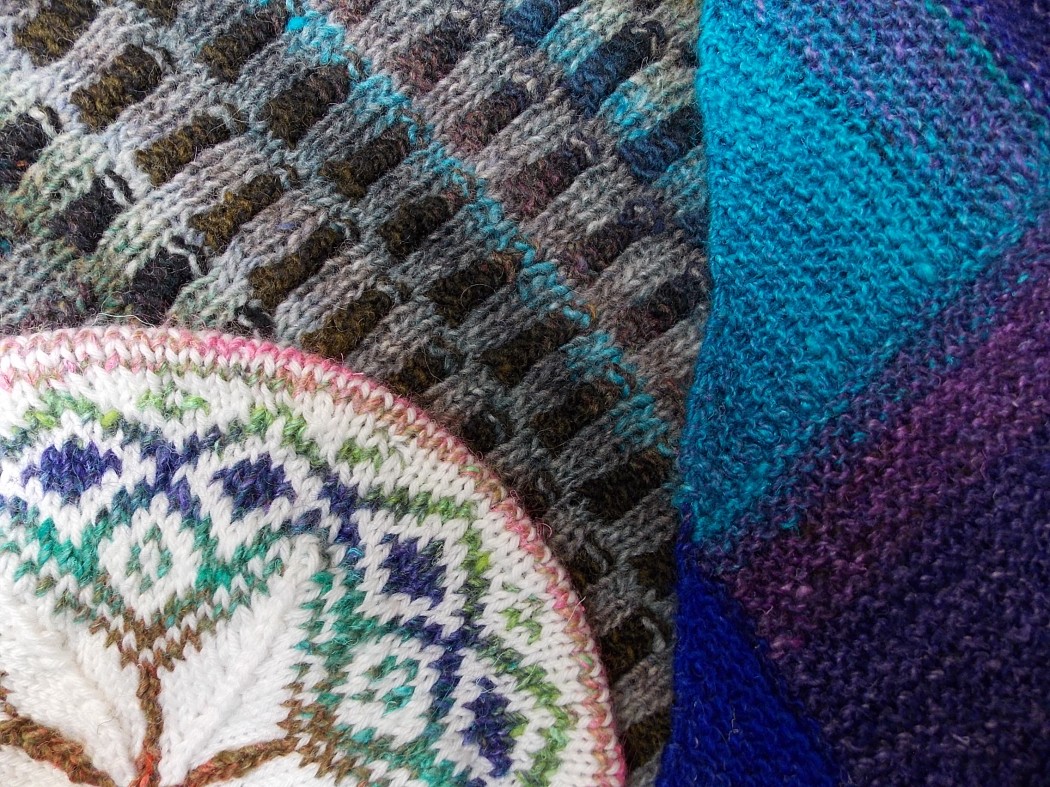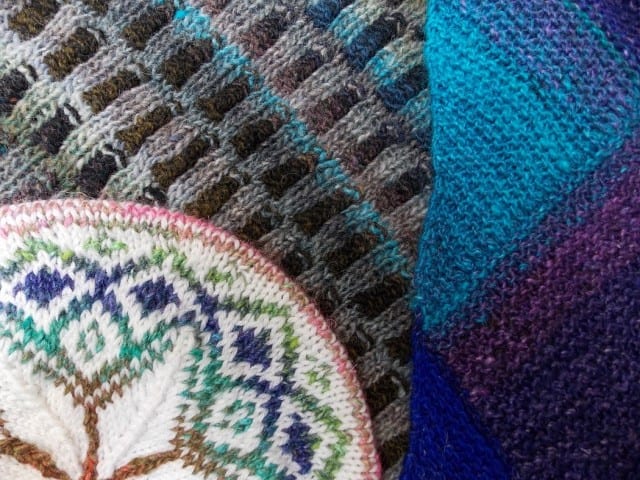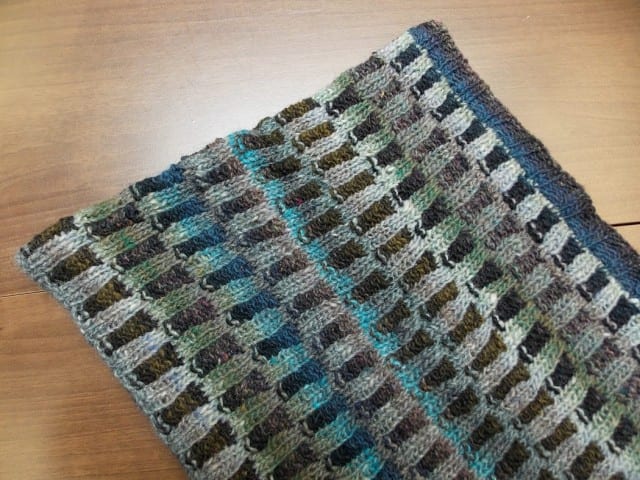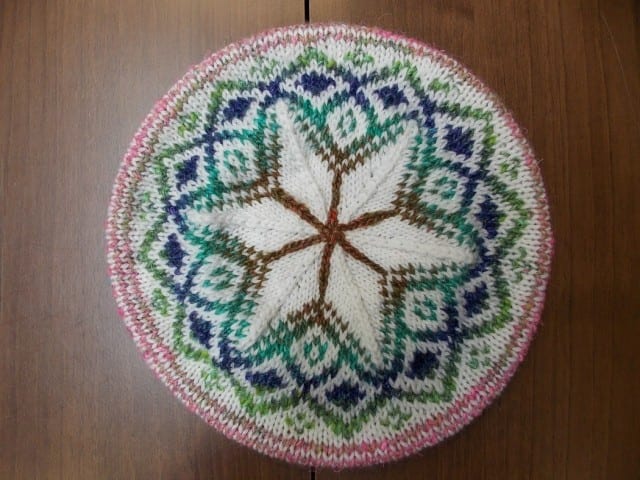Many of the yarns we sell are hand-dyed, which is what gives them such beautiful variation in color. From favorite companies like Malabrigo, Swans Island, Dream in Color, String Theory, Colinette, and more, some hand-dyed yarns are multicolored and variegated, others are semi-solid or tonally variegated. They can differ in many ways, but all hand-dyed yarns have one thing in common: no two skeins are exactly alike, even in the same colorway, even from the same dye lot. Sometimes this doesn’t matter: for one-skein projects, projects that combine multiple colorways in stripes or colorwork, or projects where you work with two yarns held together, you probably don’t have to worry about the difference between one skein of hand-dyed yarn and another. When you’re making a larger project, like a sweater, wrap, or blanket, the slightest difference between skeins can become apparent at the point where you change from one ball of yarn to the next. Here’s an example:
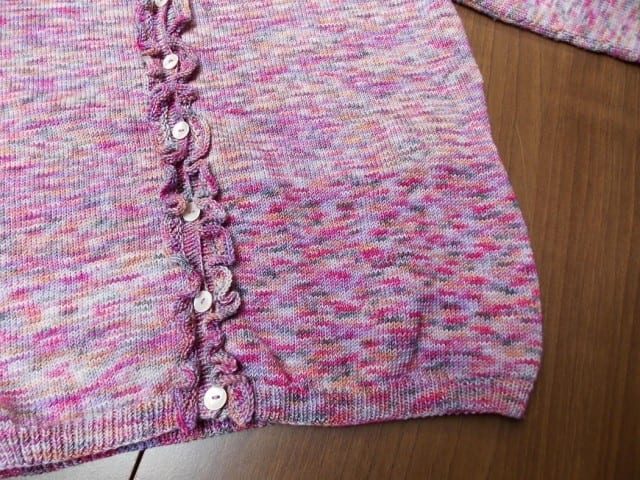
See how the bottom of the right front is darker than the rest of the sweater? That part was worked in one skein of Ella Rae Lace Merino, and the rest of the right front was worked in another skein in the same color, from the same dye lot. In a truly solid yarn, this transition would be invisible, save for the woven-in ends on the wrong side, but in a hand-dyed yarn, it can be painfully obvious.

What to do? The answer is simpler than it may sound: alternate skeins. That means working from two balls of yarn at once, knitting two rows from one, then two from the other, back and forth as if you were knitting stripes. This blends the two skeins together, so that the difference between the two isn’t so noticeable.
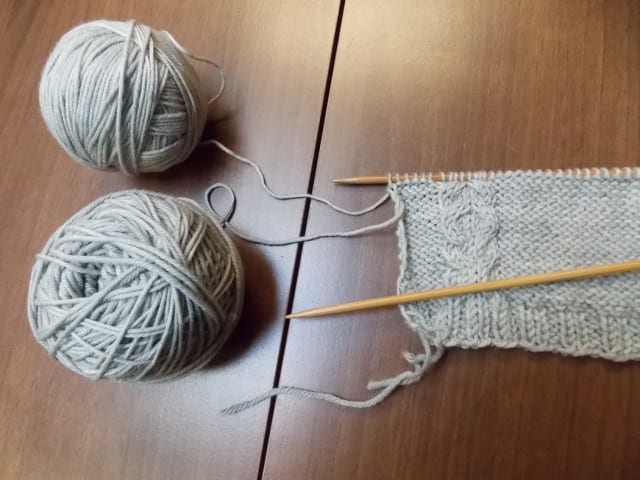
You don’t have to cut the yarn every time you go from one skein to the next; because your stripes are only two rows thick, you can just carry your yarn up the side of your work. Work two rows with Skein 1, then just let it hang. Pick up Skein 2, pulling it up and over Skein 1, and knit two rows from Skein 2.

When you’re done with that second row, you’ll find that Skein 1 is there waiting for you, ready to knit two more rows–no need to cut yarn, no ends to weave in.

This week, I started a sweater in String Theory Merino DK, and I’m alternating skeins every two rows even though this particular colorway, Cobalt, is very nearly solid. It’s an extra step, to be sure, but once you get in the rhythm of it, alternating skeins is no problem. Hand-knit garments are a big investment of both time and money, and we deserve to be absolutely thrilled with the result of our handiwork. Alternating skeins when knitting with hand-dyed yarn helps keep the colors consistent across a larger piece of fabric, which will likely make you happier in the long run. Give it a try if you haven’t yet, and you’ll be surprised by how simple it is!

